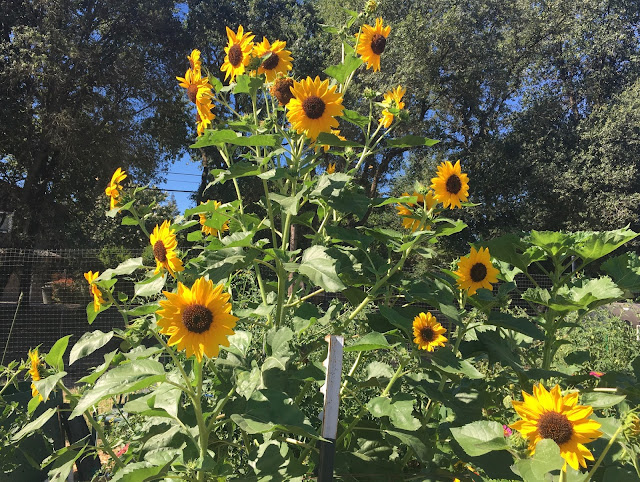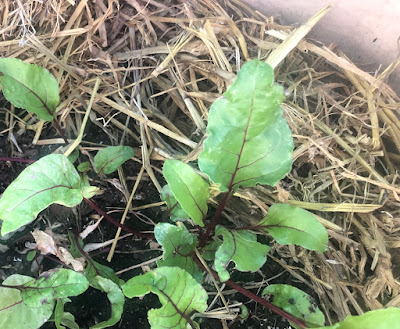
|
|
Sunflowers are quite effective as shade in the vegetable garden. Plant
some now and they'll be tall in no time. (Photos: Kathy Morrison)
|
Is your garden ready for triple-digit heat?
So far, Sacramento has managed to stay under the 100-degree mark all spring. But it’s Memorial Day weekend; of course, we’re going to see a scorcher!
Never mind that we’ve been comfortably in the low 80s, even 70s. High temperatures on Sunday and Monday will be 20 degrees higher than a week ago.
According to the National Weather Service, an excessive heat warning will be in effect from noon Sunday through Tuesday evening for most of the Sacramento Valley and foothills. Afternoon highs could reach 108 degrees on Memorial Day.
Don’t let your garden sizzle. Help your plants cope:
* Deep-water shrubs, trees, perennials and vegetables. Give your tomatoes a good soaking.
* Keep soil evenly hydrated; not too wet or completely dried out. Use a moisture meter, long screwdriver or trowel to check. Maintaining even moisture is crucial for maturing tomatoes to prevent blossom-end rot.
* Don’t fertilize during a heat wave. It can stress already-thirsty plants.
* Watch for sunburn on leaves. Erect temporary shade if needed.
* Sunburn also can damage bark, especially on young trees or shrubs, opening up the plant to wood-boring pests and premature death. It tends to be worse on the west- and south-facing sides of plants.
* If possible, move container plants out of full sun to partial shade. Container plants dry out fastest and may need water every day during high heat.
* Mulch, mulch, mulch! Spread a thick, cooling layer of organic material to retain that moisture and keep plant roots temperate. Use straw, old leaves, bark, grass clippings, even shredded newspaper. Don’t use rocks; they retain too much heat.
* Harvest lettuce, cabbage, broccoli and other cool-season vegetables. This heat will cause them to bolt – send out flower shoots and go quickly to seed. Higher temperatures also tends to make greens bitter.
* Harvest artichokes before the flowers open. (The heat will open them quickly.) Those little artichokes on side shoots won’t get bigger; they’re ready, just smaller.

|
|
Beet greens appreciate some shade and plenty of mulch when the
weather turns hot.
|
* Shade peas, spinach and other cool-season crops that aren’t ready to harvest. Erect temporary shade structures to ward off some of that blistering afternoon sun. That will buy those veggies a few more weeks of production.
* Already have baby tomatoes or peppers? Shade those plants in the hot afternoon, too, to protect from sunburn.
* Keep an eye on new plantings and seedlings. Make sure they stay hydrated. Check soil moisture and water in the early morning or evening.
These won’t be our last triple-digit days. Help your veggie garden stay cool with these tips:
* Create some needed summer shade for veggies – plant sunflowers. These fast-growing (and tall) plants can shade garden neighbors that appreciate an afternoon break from direct sun, such as peppers or eggplant.
* Let the vines keep the soil cooler. Plant watermelons, pumpkins, sweet potatoes, cucumbers, squash and other vining crops. Their vines will cover the soil, keeping it cooler and blocking out weeds. To be doubly effective, mulch around the plants before the vines cover everything.


